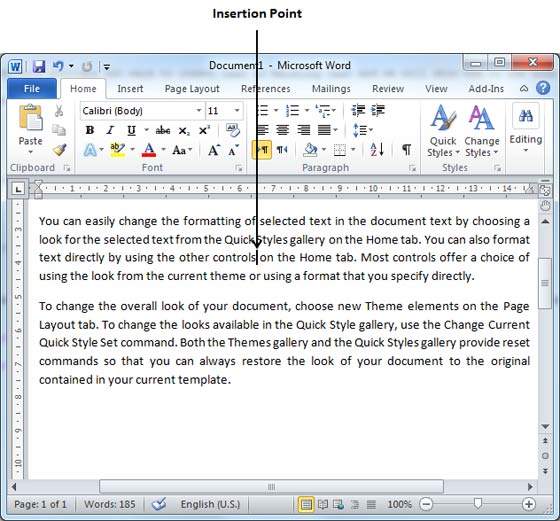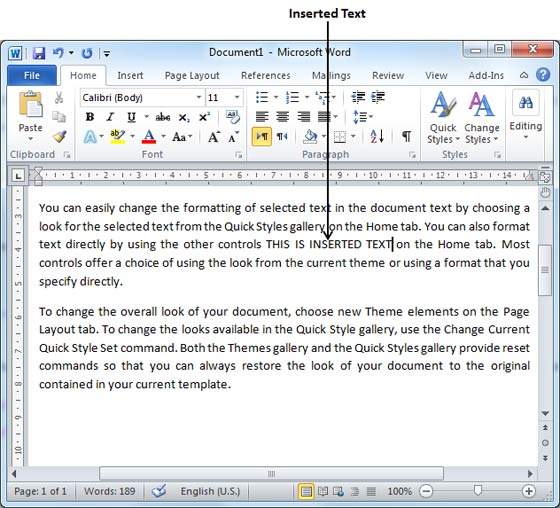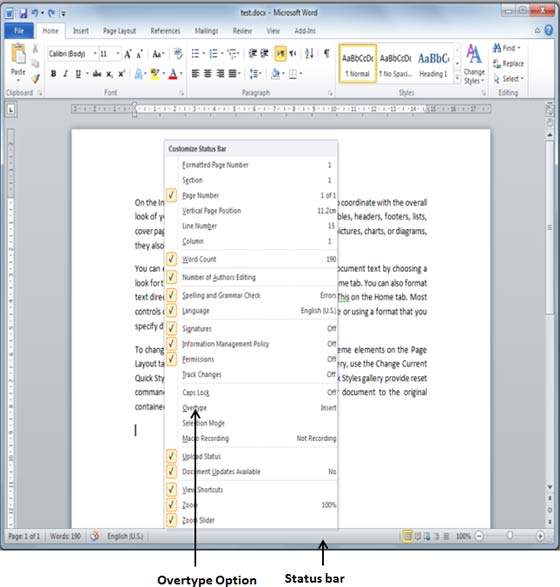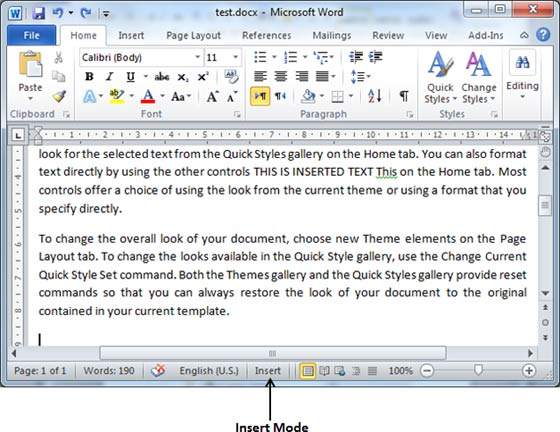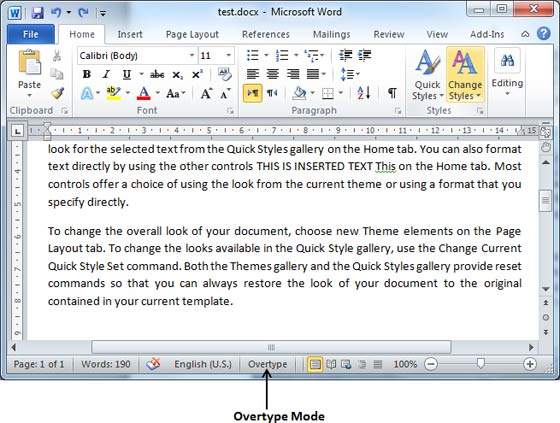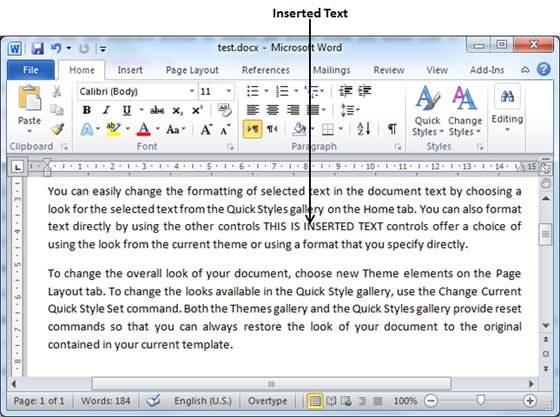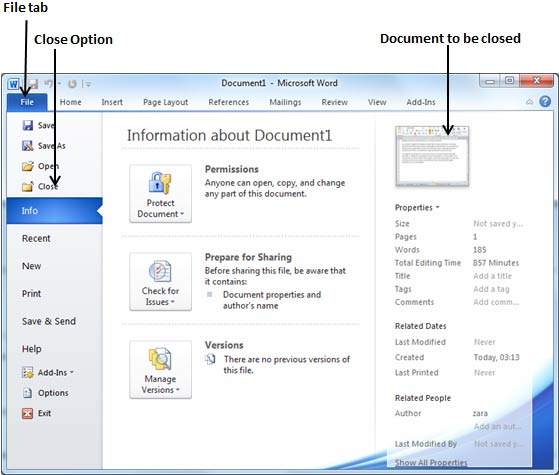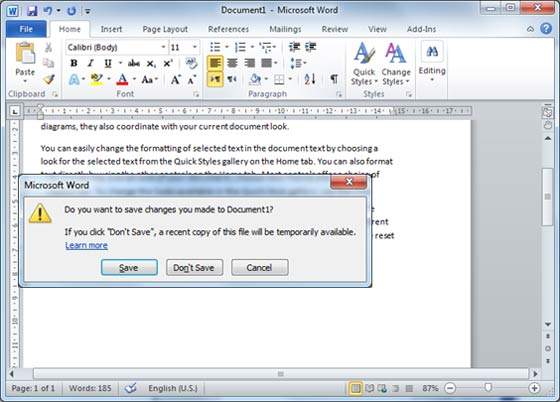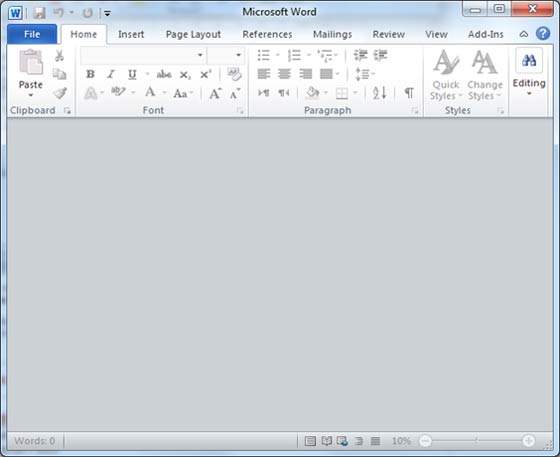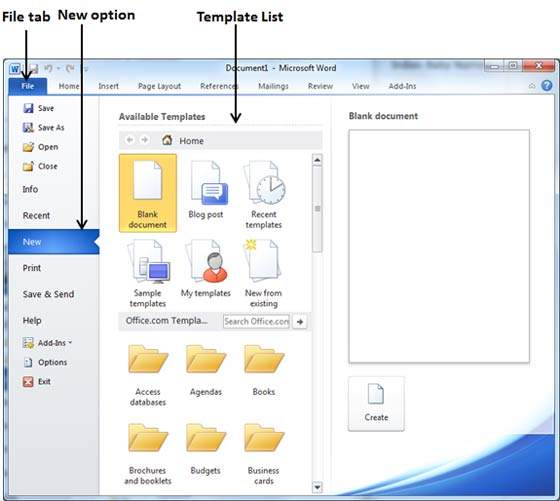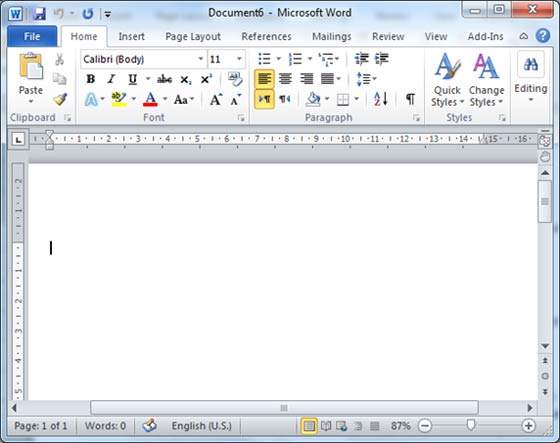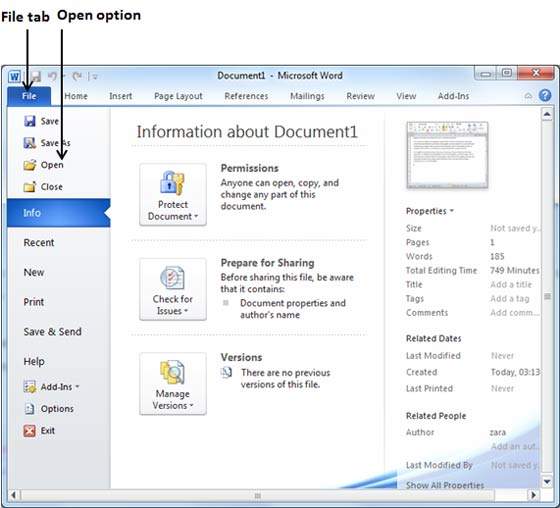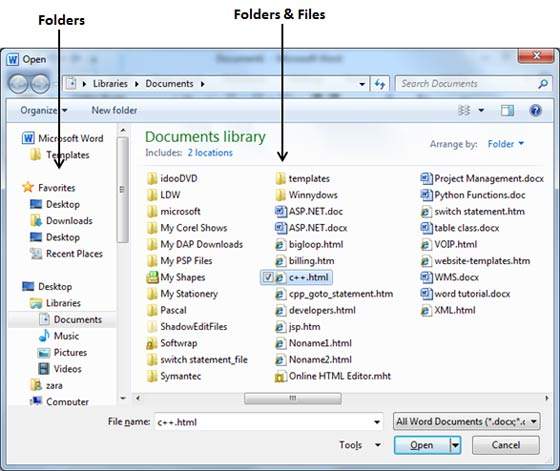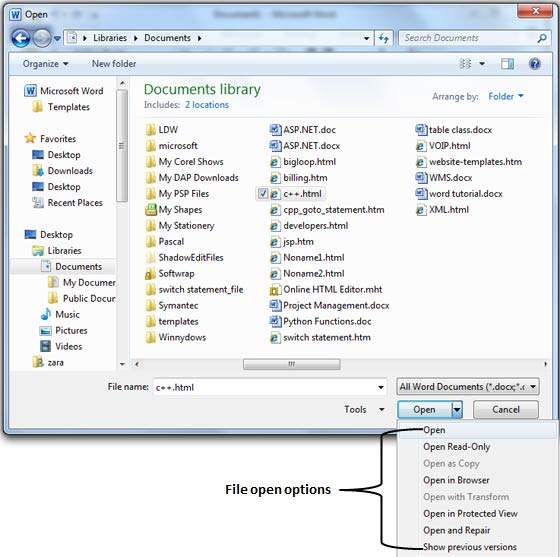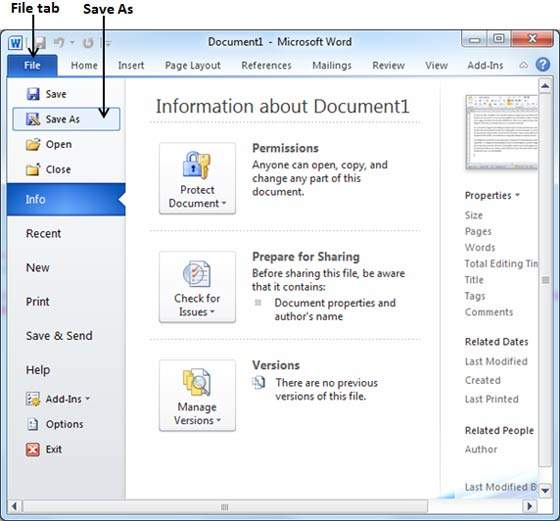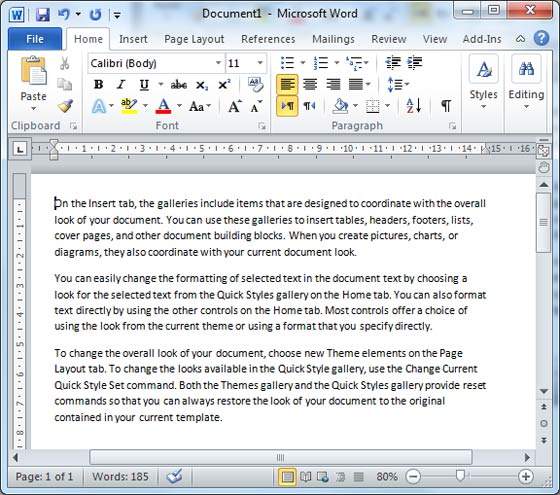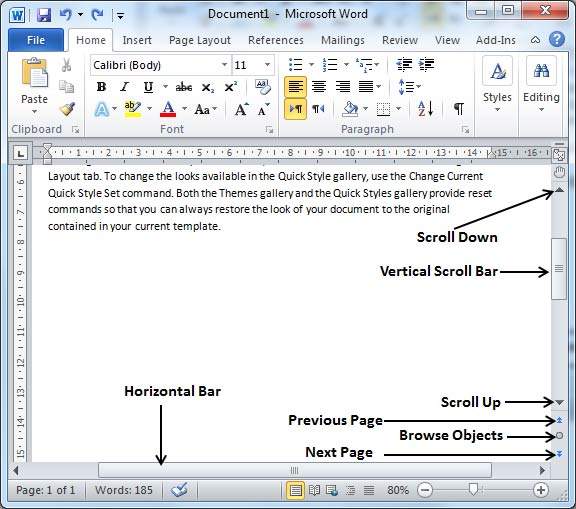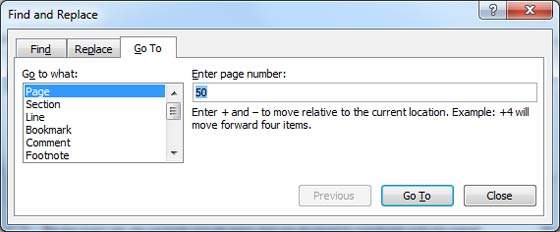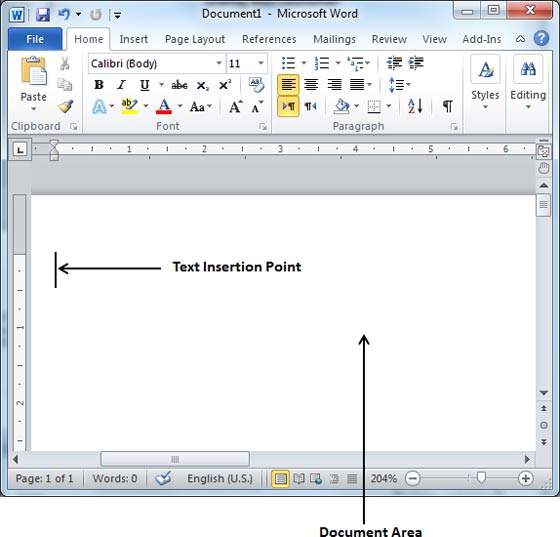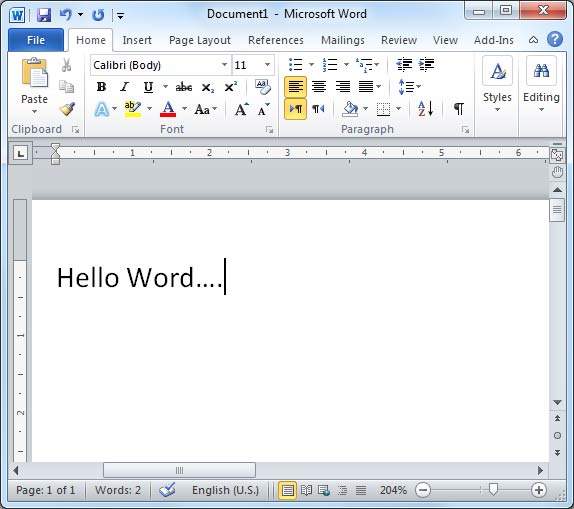In this chapter, we will discuss how to select text in Word 2010. Selecting a text is one of the most important skills required while editing a word document. You can perform various operations on a selected text; you can delete the selected text, copy it, move it, apply formatting to it, change its capitalization, etc.
The most common method of selecting a text is to click and drag the mouse over the text you want to select. Following table lists down a few other simple methods that will help you in selecting text in different scenarios −
| S.No | Component & Selection Method |
|---|---|
| 1 | Selecting text between two points Click at the start of the block of text, hold down Shift, and click at the end of the block. |
| 2 | Selecting a single word Double-click anywhere on the word you want to select. |
| 3 | Selecting a paragraph Triple-click anywhere on the paragraph you want to select. |
| 4 | Selecting a sentence Hold down the Ctrl key and click anywhere in the sentence you want to select. |
| 5 | Selecting a column of text Hold down Alt, click and hold the mouse button, and drag over the column you want to select. |
Note that only one part of the document can be in the selected state. If you have one portion of the document in selected state and as soon as you try to select any other part of the document, previous part will automatically be de-selected.
Using the Selection Bar
The black shaded area in the following screen shot is called the selection bar. When you bring your cursor in this area, it turns into a rightward-pointing arrow.
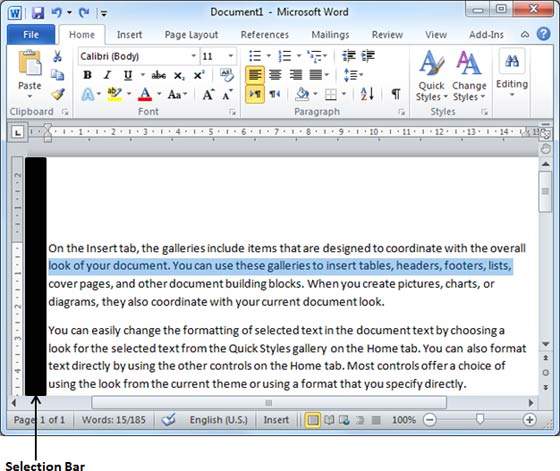
You can use the selection bar to select the various components of a document as described in the following table −
| S.No | Component & Selection Method |
|---|---|
| 1 | Selecting a line Bring your mouse in the selection bar area and click in front of the line you want to select. |
| 2 | Selecting a paragraph Bring your mouse in the selection bar area and double click in front of the paragraph you want to select. |
| 3 | Selecting the document Bring your mouse in the selection bar area and triple-click. |
Using the Keyboard
Keyboard provides very good support when you want to select various components of the document as described in the following table −
| S.No | Key & Selection Method Selecting Text |
|---|---|
| 1 | Ctrl + A Press Ctrl + A keys to select the entire document. |
| 2 | Shift Keep pressing the Shift key and use any of the arrow keys to select the portion of text. |
| 3 | F8 Press F8 and then use any of the arrows keys to select the portion of text. |
| 4 | Ctrl + Shift + F8 Press Ctrl + Shift + F8 and then use any of the arrows keys to select column of the text. |


